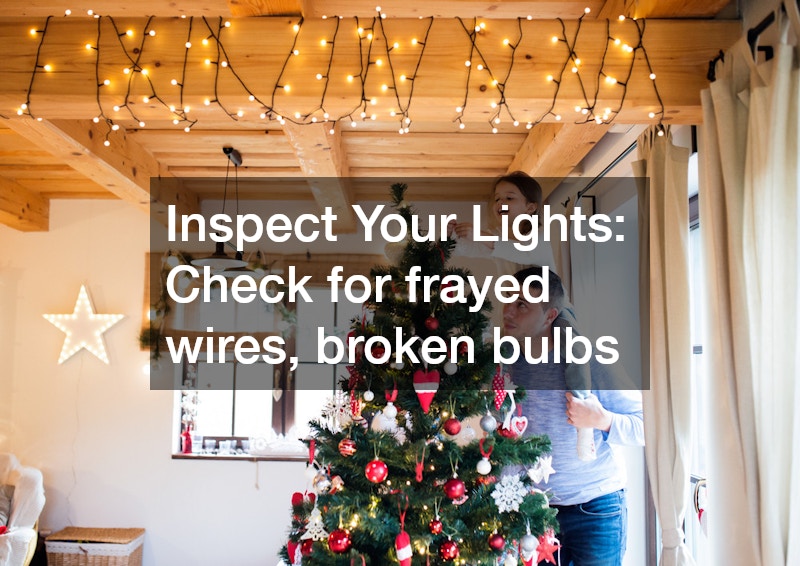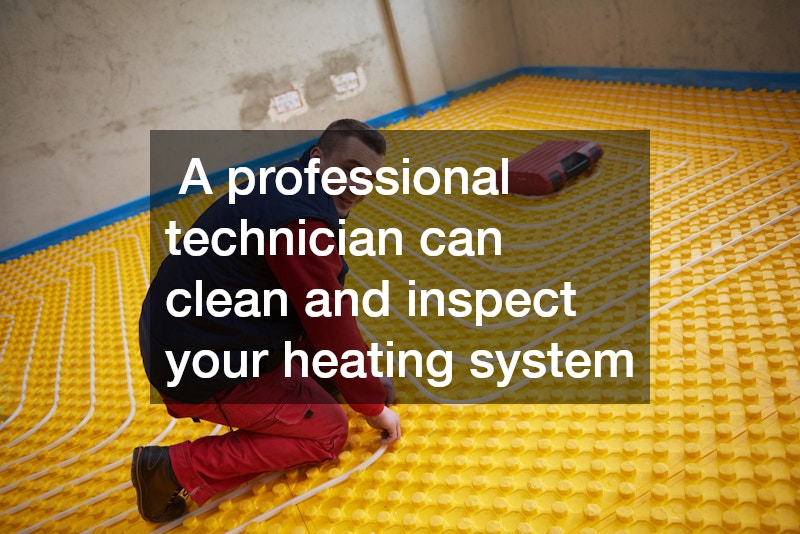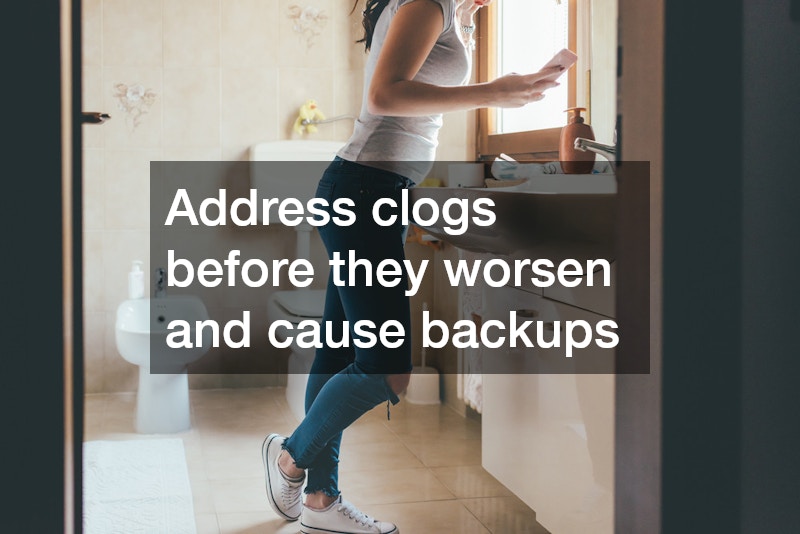The holiday season is a magical time filled with joy, family gatherings, and festive decorations. While decking the halls and preparing your home for the winter months, it’s essential to prioritize safety and functionality. From installing Christmas lights to ensuring your HVAC system operates smoothly, proper preparation can save time, money, and headaches. This comprehensive guide will walk you through the necessary steps to keep your home’s systems running efficiently, maintain safety, and create a cozy environment for your holiday celebrations.
Let’s dive into the actionable tips and tricks that will help you:
I. Preparing Your HVAC System for Winter Comfort and Safety
A warm, comfortable home starts with a well-maintained HVAC system. During the winter months, heating becomes crucial, and any inefficiencies in your system can lead to higher energy bills and discomfort. Here’s how you can ensure your HVAC system is ready for the season:
A. HVAC Maintenance Checklist for Winter: Detailed Guidance
Winter places high demands on your HVAC system, making preparation essential for comfort and efficiency. Here’s an in-depth look at each step to ensure your system performs at its best during the cold months:
1. Inspect and Clean Filters
Dirty or clogged filters are among the most common issues affecting HVAC efficiency. Here’s why it matters and how to address it:
- Why Clean Filters Matter: Dirty filters restrict airflow, forcing your HVAC system to work harder to circulate warm air. This not only increases energy bills but also shortens the lifespan of your equipment. Poor airflow can also result in uneven heating, leaving some rooms cold and others overly warm.
- What to Do:
- Check your filter monthly, especially during periods of heavy use, such as winter.
- Replace disposable filters every 1-3 months, or clean reusable filters according to the manufacturer’s instructions.
- Use high-quality filters, such as HEPA or pleated options, for better air filtration and improved indoor air quality.
- Pro Tip: Set a reminder on your phone or calendar to inspect and replace filters regularly.
2. Schedule a Professional Inspection
Even with regular maintenance, a professional inspection is critical to identifying hidden issues that could lead to system failure.
- Why It’s Important: HVAC systems contain complex components that require expert knowledge to assess. An HVAC repair professional technician can detect worn-out parts, refrigerant leaks, or issues with airflow that aren’t apparent during casual inspections. Early detection prevents breakdowns and ensures your system operates efficiently.
- What to Expect: During an inspection, the technician will:
- Examine the furnace, heat exchanger, and blower motor for wear or damage.
- Check for refrigerant leaks or imbalances in split systems.
- Test the thermostat and ensure it communicates correctly with the HVAC system.
- Clean internal components, such as the burners and coils, for better performance.
- Pro Tip: Schedule your inspection in late fall or early winter to avoid peak-season delays.
3. Seal Air Duct Leaks
Air duct leaks are a silent energy thief, wasting significant amounts of heated air and forcing your system to run longer to maintain a comfortable temperature.
- Why It’s Necessary: According to the U.S. Department of Energy, air duct leaks can result in up to 30% energy loss in a typical home. Leaks allow heated air to escape into unconditioned spaces like attics or basements, reducing the overall efficiency of your system.
- How to Seal Duct Leaks:
- Locate Leaks: Turn on your HVAC system and feel along the ductwork for drafts. Common problem areas include joints, seams, and connections to vents.
- Seal Small Leaks: Use mastic sealant or aluminum foil tape (not standard duct tape, which deteriorates over time) to cover gaps and holes.
- Insulate Ductwork: Add insulation around ducts in unheated spaces to prevent heat loss and improve efficiency.
- Pro Tip: If leaks are extensive, consider hiring a professional to assess and repair your ductwork.
4. Calibrate Your Thermostat
A properly calibrated thermostat is key to maintaining consistent indoor temperatures and avoiding unnecessary energy waste.
- Why It’s Important: If your thermostat isn’t accurately reading the room temperature, your system may overheat or underheat your home. This results in discomfort and wasted energy.
- How to Calibrate:
- Compare your thermostat’s reading to a reliable indoor thermometer. If the readings differ, recalibrate the thermostat following the manufacturer’s instructions.
- If recalibration isn’t possible, consider upgrading to a programmable or smart thermostat.
- Consider Upgrading:
- Programmable Thermostats: Allow you to set schedules for heating, ensuring the system runs only when needed.
- Smart Thermostats: Offer features like remote control via smartphone apps, learning your habits, and optimizing energy use.
- Pro Tip: Use the programmable thermostat to lower the temperature by a few degrees at night or when you’re away to save on heating costs.
B. Benefits of Air Duct Maintenance
Maintaining clean and efficient air ducts offers several advantages:
- Improved Air Quality: Dust, allergens, and debris accumulate in ducts, circulating through your home. Cleaning them ensures a healthier environment for guests.
- Enhanced Energy Efficiency: Properly maintained ducts improve airflow, reducing strain on your HVAC system and lowering energy bills.
- Prolonged HVAC Lifespan: Reduced strain on your system translates to a longer life for your HVAC unit, saving money on replacements.
II. Exterior Safety: Christmas Lights Done Right
Holiday lights add a magical touch to your home, but improper installation can lead to electrical hazards and damage to your property. Following these steps ensures a safe and festive display.

A. Safety Tips for Installing Christmas Lights
- Inspect Your Lights: Check for frayed wires, broken bulbs, or damaged plugs. Replace faulty items to prevent electrical fires.
- Use LED Lights: Energy-efficient LED lights reduce power consumption and generate less heat, minimizing fire risks.
- Secure Lights Properly: Use clips or hooks designed for outdoor use instead of nails or staples, which can damage siding and pose safety risks.
- Avoid Overloading Outlets: Distribute the load across multiple outlets and use surge protectors to prevent circuit overloads. If you have an elaborate display, get a Christmas lights installation specialist to do it– the job gets done, and everybody is gets to enjoy the lights safely.
III. Protecting Your Home’s Exterior with Tree Trimming and Roofing Services
Winter weather and holiday decorations can put your home’s exterior at risk. Proper tree trimming and roofing maintenance can help prevent accidents and protect your property.
A. Importance of Tree Trimming for Safety
- Remove Overhanging Branches: Heavy snow and ice can cause branches to break, damaging your roof or power lines. Hire professional tree trimming companies for tall or unstable trees.
- Create Space for Decorations: Trim trees near windows or walkways to make room for festive displays.
- Ensure Healthy Growth: Trimming dead or diseased branches promotes healthy tree growth and reduces hazards.
B. Ensuring Your Roof is Holiday-Ready
- Inspect for Damage: Check for cracked or missing shingles, leaks, or signs of wear. Prompt repairs by roofing services can prevent further damage.
- Clean Gutters: Remove leaves and debris to prevent ice dams, which can lead to water damage.
- Install Heat Cables: Heat cables along roof edges can help melt snow and prevent dangerous icicles from forming.
IV. Enhancing Energy Efficiency with Heating System and Cooler Maintenance
The holidays often increase energy usage due to heating demands and decorative lighting. Optimizing your heating system and cooler efficiency can save money and ensure comfort.

A. Heating Repair and Maintenance
-
1. Schedule a Tune-Up
A professional tune-up is one of the most effective ways to maintain your heating system. Regular inspections identify potential problems before they escalate, keeping your system running smoothly all season.
- Why It’s Important:
- Over time, dust, dirt, and debris accumulate inside your heating system, reducing efficiency and performance.
- Regular maintenance extends the lifespan of your system, saving money on premature replacements.
- A well-maintained system operates more efficiently, lowering energy costs and reducing your carbon footprint.
- What a Technician Does During a Tune-Up:
- Cleans burners, heat exchangers, and other key components to ensure efficient combustion and heat transfer.
- Checks for gas leaks, carbon monoxide emissions, or electrical issues that could pose safety hazards.
- Tests thermostat functionality and calibrates it for accurate temperature control.
- Lubricates moving parts, such as motors and bearings, to reduce wear and tear.
- Pro Tip: Schedule your tune-up in early fall to beat the winter rush and ensure your system is ready before the first cold snap.
2. Bleed Radiators
For homes with radiator-based heating systems, trapped air can reduce heat distribution and leave some areas of your home cold. Bleeding radiators is a simple process that restores efficiency.
- Why It’s Necessary:
- Air pockets prevent hot water from circulating evenly, reducing the radiator’s ability to emit heat.
- Unbled radiators may make gurgling or hissing noises, indicating trapped air.
- How to Bleed a Radiator:
- Turn off your heating system and allow the radiators to cool.
- Locate the bleed valve, usually found at the top of the radiator.
- Place a small container or towel under the valve to catch water.
- Use a radiator key to slowly turn the valve counterclockwise until air starts escaping (you’ll hear a hissing sound).
- Once water starts to flow steadily, close the valve tightly.
- Turn your heating system back on and check for even heat distribution.
- Pro Tip: Start bleeding radiators on the ground floor and work your way up to ensure air escapes properly.
3. Insulate Heating Ducts
Heating ducts in unconditioned spaces, such as attics or basements, can lose significant amounts of heat if not properly insulated. Insulating ducts is an effective way to conserve energy and improve system performance.
- Why It’s Important:
- Uninsulated ducts lose heat to the surrounding environment, making your system work harder to maintain the desired temperature.
- Insulation prevents condensation, which can lead to mold growth and damage over time.
- How to Insulate Ducts:
- Inspect your ductwork for leaks or gaps and seal them with mastic sealant or aluminum foil tape.
- Wrap ducts with foil-faced fiberglass insulation or pre-slit foam insulation sleeves, securing them with duct tape or zip ties.
- Focus on areas in unheated spaces, such as attics, basements, or crawlspaces.
- Pro Tip: Check your insulation’s R-value (a measure of thermal resistance) to ensure it meets recommended standards for your climate zone.
4. Upgrade Your Heating System
If your heating system is outdated, upgrading to a modern, energy-efficient model can provide long-term savings and improved performance.
- When to Upgrade:
- If your system is over 15 years old and requires frequent repairs, it may be more cost-effective to replace it.
- Rising energy bills and uneven heating are signs your system is no longer operating efficiently.
- Benefits of Energy-Efficient Models:
- Modern systems, such as high-efficiency furnaces (rated at 90% AFUE or higher), use less fuel to produce the same amount of heat.
- Smart thermostats and zoned heating options provide precise temperature control and reduce energy waste.
- Choosing the Right System:
- Consider your home’s size, insulation, and climate when selecting a heating system.
- Look for ENERGY STAR-certified models to ensure energy savings and environmental benefits.
- Pro Tip: Check for government rebates or tax incentives available for upgrading to energy-efficient heating systems.
- Why It’s Important:
B. Cooler Repairs for Year-Round Efficiency
- Clean Condenser Coils: Dust and debris can reduce cooling efficiency. Regularly clean coils to maintain performance.
- Check Refrigerant Levels: Low refrigerant levels can indicate a leak that needs professional repair.
- Upgrade to Energy-Efficient Models: Newer coolers consume less energy, reducing costs and environmental impact. Consult with a Cooler repairs and installation expert to determine which models are appropriate for your household.
V. Plumbing Preparation: Avoid Holiday Disasters
Plumbing emergencies like burst pipes or water heater issues can disrupt holiday celebrations. Preparing your plumbing system in advance minimizes these risks.
A. Water Heater Repairs for Holiday Guests
- Flush the Tank: Sediment buildup reduces efficiency. Flushing your water heater ensures consistent hot water for guests.
- Inspect for Leaks: Check for water pooling around the base of the heater, which may indicate a problem.
- Install a Water Heater Blanket: Insulating your water heater can save energy and keep water warm longer.
B. When to Call Local Plumbers
- Frozen Pipes: If pipes freeze, call local plumbers to safely thaw and repair them.
- Slow Drains: Address clogs before they worsen and cause backups during the holidays.
- Pre-Holiday Check-Up: Schedule an inspection to identify and resolve potential issues before they escalate.
VI. Budget-Friendly Resources for Homeowners
Preparing your home for the holidays doesn’t have to break the bank. Here are some cost-effective strategies and resources to help you save money while maintaining safety and comfort.
A. DIY Maintenance Tips to Save Money
- Clean Filters and Air Ducts: Purchase a filter cleaning kit and vacuum duct vents to reduce HVAC costs.
- Install Weather Stripping: Seal gaps around doors and windows to prevent heat loss and lower energy bills.
- Use Solar Lights: Solar-powered holiday lights reduce electricity costs and are environmentally friendly.
B. Local Services and Discounts
- Seasonal Promotions: Many HVAC repair companies, tree trimming companies, and roofing services offer discounts during the holidays.
- Energy Rebates: Check for rebates on energy-efficient HVAC upgrades or appliances.
- Community Resources: Some local utilities provide free or low-cost home energy assessments.
A Safe, Festive, and Comfortable Home
The holiday season is a time for celebration, and a little preparation can go a long way in ensuring a safe, festive, and welcoming home. By focusing on HVAC repair, heating system maintenance, tree trimming, and thoughtful Christmas light installation, you can enjoy the season with peace of mind. Take the time to address potential risks and implement these tips, and your home will be the perfect setting for holiday memories.
Start your holiday preparations today to save money, avoid stress, and make this season truly magical for you and your loved ones!

